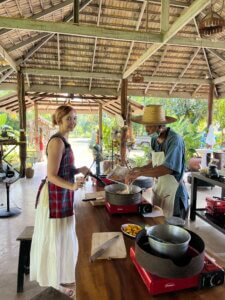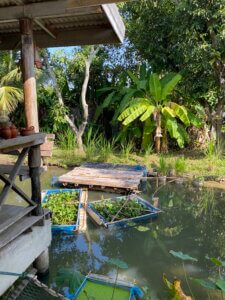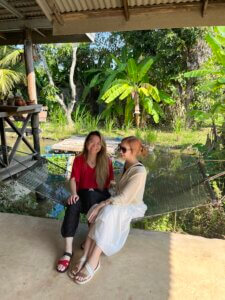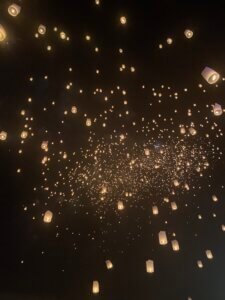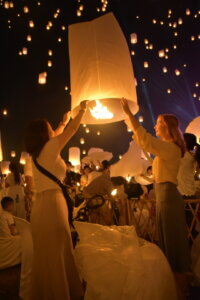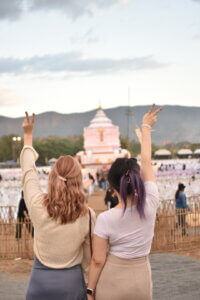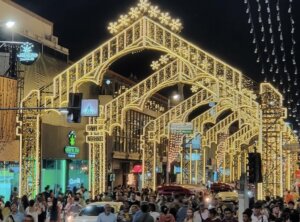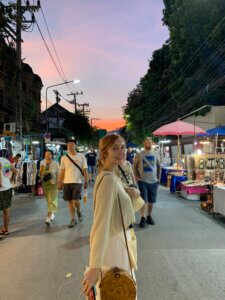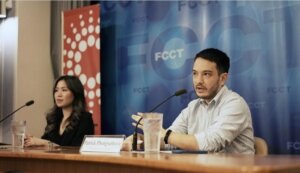Khao Yai:
I recently went on a weekend trip to Khao Yai, which is about 2 hours from Bangkok. The highlight of the trip was going to Khao Yai national park, Thailand’s first national park. My friend and I did a guided tour of the park where we saw all kinds of different animals: spiders, snakes, gibbons, macaques, elephants, monitor lizards, king squirrels, hornbills, and bats. We got really lucky to see so many different types of animals, especially gibbons and elephants. While we were hiking, we heard gibbons and then had to look really closely to see them up in the treetops, swinging from tree to tree! Also, at the end of the day, a park ranger informed us that there’d been an elephant spotting, and we headed to where the elephants were. At first, we didn’t see elephants, but we waited patiently, and then we saw a mom and baby elephant. They crossed the road and then made their way over to the salt lick on the other side where we watched them for about an hour or longer.
Also, at the Khao Yai national park visitor center, I was surprised to find a slice Tennessee there! It turns out that Khao Yai national park and the Great Smoky Mountains national park signed the sister park agreement in 2013, a concept developed to create international cooperation regarding exchange, research, academic study, and management of national parks.
P.S. It was so much cooler in Khao Yai (in the 70s), which I was loving!
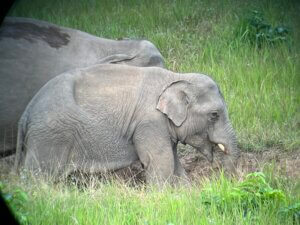
wild elephant spotting (seen through binocular lenses that someone kindly let us borrow)
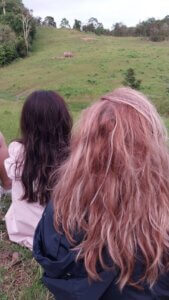
watching the elephants from afar
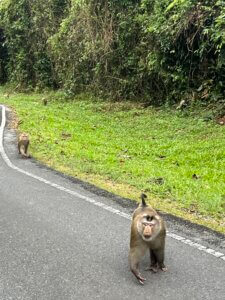
macaques
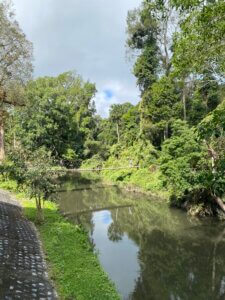
Khao Yai national park
Also, while in Khao Yai, we went to a flower park and natural spring:
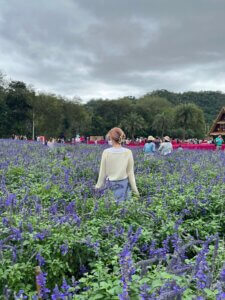
Hokkaido flower park in Khao Yai

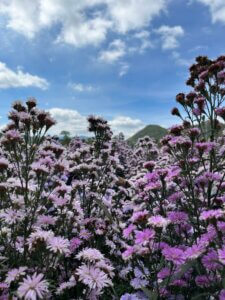
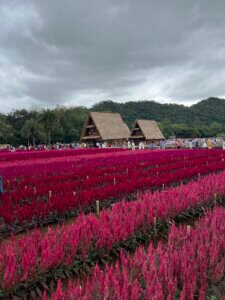
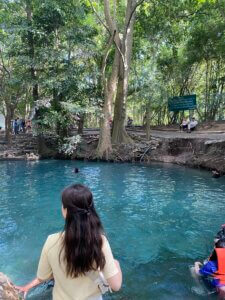
Ban Tha Cha spring
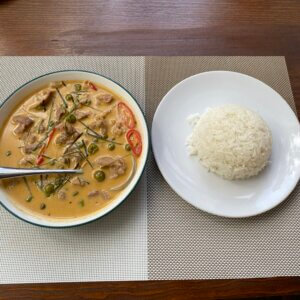
Bangkok Illustration Fair 2023:
The other weekend, I went to Bangkok Illustration Fair (BKKIF) held at Bangkok Art and Culture Centre. BKKIF aims to promote and boost the potential of the Thai illustration scene as well as fostering development and expanding work at both the national and international levels. The list of selected BKKIF artists comprised Thai artists and international artists from the Philippines, South Korea, Japan, Malaysia, China, Ukraine, and Myanmar. It was a really unique opportunity to engage in discussions with the artists and learn more about their techniques/styles and the stories behind their artwork. The artists also had products for sale, and I bought many things including stickers, keychains, cards, books, and bookmarks.
I found out about BKKIF through a friend of mine whose art was featured. I’ve always wanted to learn how to draw, so I felt really inspired here; it’s one of the most creative spaces I’ve been in in a really long time.
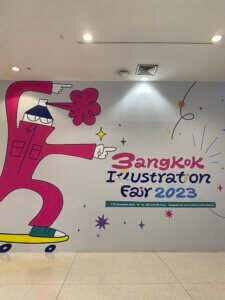
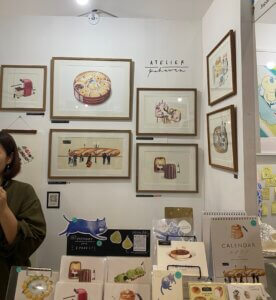
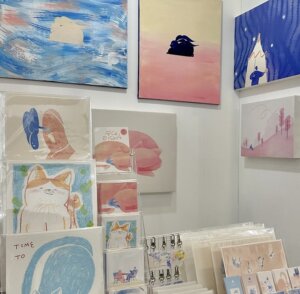
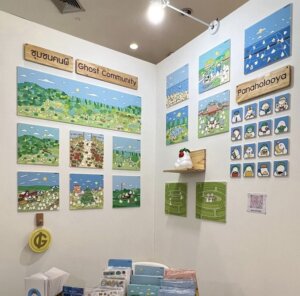
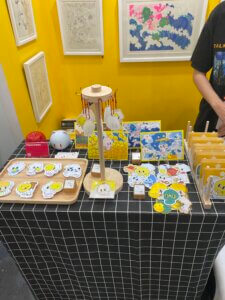
Christmas in Bangkok:
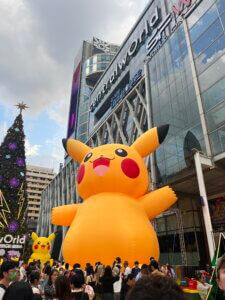
giant Pikachu at Central World
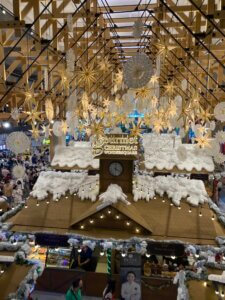
Christmas market at Emsphere
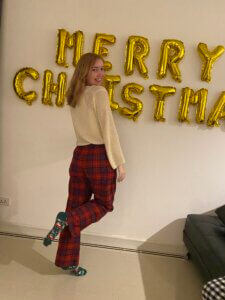
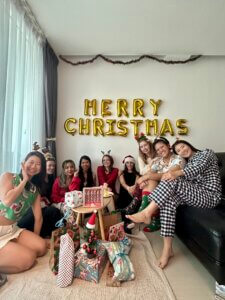
Christmas party with friends
Work updates:
I sent in my first submission to UNHCR on behalf of a client, an appeal submission, which meant that it was a tight deadline to request client transcripts from UNHCR, review the client’s testimony, interview the client, and format the submission, along with relevant COI. In this particular case, it was important to highlight procedural issues, as well as new information since first instance RSD interviews.
Myself and the other VLAs also conducted several intro to RSD trainings throughout November and December for Chinese, Hmong, Somali, and Urdu-speaking clients. Intro to RSD is particularly beneficial for new arrivals to learn how the RSD process works and what to expect.
Soon we’ll have two weeks off work for the winter break. Susu na!
